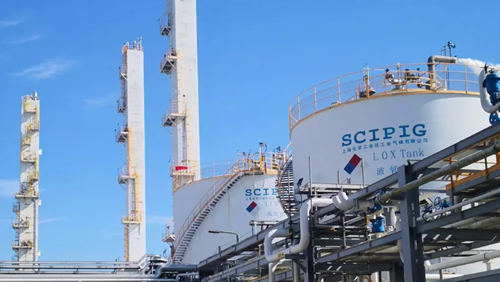News
Air Liquide to build two new H2 production units in Shanghai Chemical Industry Park
Shanghai Chemical Industry Park Industrial Gases (SCIPIG), a subsidiary of Air Liquide, will invest more than €200 MM to build two H2 production units and related infrastructure in Shanghai Chemical Industry Park (SCIP). These units will bring significant environmental benefits, as they are designed to replace current supply from a third-party coal-based gasification unit, will be equipped with CO2 capture and recycle technology and will be connected to SCIPIG existing local network. These two units will come in addition to two other H2 units and four air separation units that SCIPIG already operates in the park.

Through more than 15 year-long contracts, these units will produce H2 and carbon monoxide for the supply to Covestro China and Shanghai Lianheng Isocyanate Company (SLIC, a joint-venture led by BASF and Huntsman) in the park, as well as mobility, other industrial and electronics customers in the Yangtze River Delta megalopolis. The two units will have a total H2 production capacity of around 70,000 Nm3/h. They will be equipped with units to capture and recycle CO2 to contribute to the production of carbon monoxide (CO) for a total capacity of 28,000 Nm3/h.
Planned to be operational in phases, starting from the year end 2023, the two steam methane reformers (SMR), will be designed and built by Air Liquide Engineering & Construction. They would not only replace a third-party coal-based gasification unit but will also be equipped with CO2 recycle units and connected to the existing SCIPIG local network. This will avoid the emission of 350,000 tpy of CO2, which is comparable to the equivalent electricity-related emissions of 1-MM Chinese households. Connecting the production units to SCIPIG’s local pipeline network will further enhance the reliability and flexibility of gas supply.
Air Liquide has been actively involved in the development of the Shanghai Chemical Industry Park since 1996. Host to major international and local chemical companies, the park covers 29.4 km2 and is located near the Shanghai Yangshan port, one of the busiest container ports in the world. Among other initiatives, Air Liquide recently announced the creation of a joint venture with Shenergy and SCIP to use the H2 produced by SCIPIG to supply H2 refueling stations across the Yangtze River Delta and support the fast-growing H2 vehicles market in the region.
François Abrial, Member of the Air Liquide Group’s Executive Committee supervising Asia Pacific said, “These new investments further enhance Air Liquide’s long-term collaboration with Covestro, SLIC and Shanghai Chemical Industry Park. Leveraging our expertise in hydrogen production as well as carbon capture and utilization, the project demonstrates our capacity to bring solutions for our customers which are reliable, competitive, and beneficial to the environment. A specialist in the decarbonization of the industry, Air Liquide is proud, with this project, to support Shanghai’s ambitious climate plan.”
Holly Lei, President of Covestro China said, “We are pleased to further strengthen our partnership with SCIPIG in the Shanghai Chemical Industry Park. The new investment will provide a reliable supply of important raw materials to Covestro Integrated Site Shanghai. In addition, we will realize the synergy to reduce the carbon footprint of hydrogen, which as a fuel can contribute to a low-carbon mobility in the Yangtze River Delta Region. In this regard, our ambition to become climate neutral goes hand in hand along the value chain and beyond the company boundary.”
Ma Jing, Director of Shanghai Chemical Industry Park Administration Committee said, “We welcome SCIPIG’s new investment in the park. Bringing in innovative technologies, it will help us to transition away from coal-based gas production and drastically reduce associated carbon emissions. At present, SCIP is actively implementing a new roadmap for green and low-carbon development in line with the national strategic deployment. SCIPIG's new investment will play an important role in reducing carbon emissions in the park. SCIP will, as always, assist in facilitating the construction and operations of this project and in promoting the use of low-carbon hydrogen to contribute to our common carbon peak and carbon neutral objectives.”

